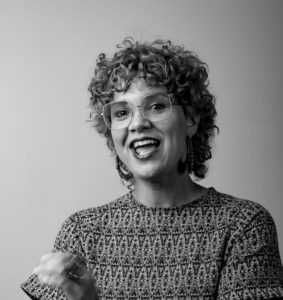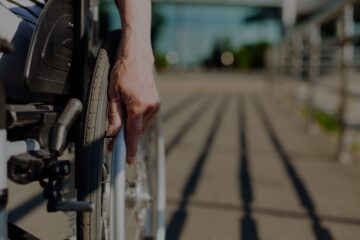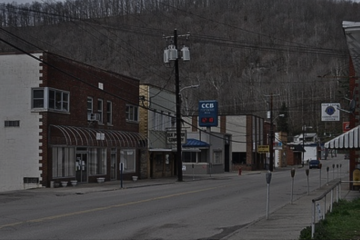by Crystal Good, writing for the “When All Are Counted” Project
The opioid epidemic’s narrative, as currently presented, remains woefully incomplete. While headlines frequently highlight the struggles of white suburban and rural populations, they glaringly overlook the escalating crisis within Black communities. Charleston, WV, is a glaring testament to the racial disparities in opioid-related fatalities and the disproportionate solutions offered.
As the publisher of “Black By God,” I consistently emphasize the need to delve deeper into the opioid epidemic’s impact on the Black community. I often dare people to Google for the data. While movies like “Heroin(e),” “Dope Sick,” and Eric Eyre’s Pulitzer Prize-winning articles that expose the flood of opioids flowing into depressed West Virginia counties with the highest overdose death rates in the country shed light on the epidemic’s origins, the Black community’s narrative remains largely untold.
This week, station WBUR in Boston ran a segment on their show On Point that underscored a critical facet of the crisis titled, “What’s behind the increase in overdose deaths for Black Americans?”
My own family has been deeply affected by addiction. My brother, currently incarcerated due to his substance struggles, has had multiple near-death experiences, only to be revived by naloxone. Before my father and stepmother passed away, they took on the responsibility of his daughter, stepping in to secure kinship custody as my nieces’ parents were grappling with the consequences of their substance abuse. While my brother, a Black man, found himself in prison, the mother, a white woman, was placed in a recovery home.
Charleston, my hometown, was recently subjected to a barrage of criticism surrounding efforts to revive harm reduction and needle exchange programs. We’ve been down this road many times. In 2018, the New York Times reported on it: “Why a City at the Center of the Opioid Crisis Gave Up a Tool to Fight It.” In 2021, the CDC’s subsequent response to skyrocketing HIV rates spurred U.S. Sen. Joe Manchin to submit a congressional inquiry r into the HIV outbreak in Kanawha County.
Despite mounting need and evidence, the community remains divided on what to do.
A resonating sentiment amongst Charleston’s Black community on Facebook is: “When we were on crack, we didn’t get crack pipes.” It’s a poignant reference to the 1990s crack epidemic, and, unfortunately, fails to address that crack pipes weren’t key transmitters for HIV. This argument and similar ones continue to fuel a cycle of misunderstanding and marginalization, amplified by stigmatizing narratives on social media platforms like Facebook.
The West Side of Charleston, home to a considerable portion of the Black community, is marred by socio-economic issues. Deep-seated stereotypes, memories from the crack epidemic, and even scars from Black America’s struggles with heroin in the 70s and 80s fuel hesitance for needle exchange programs. Arguments opposing these programs and gossip-driven stigmatization only intensify Black individuals’ isolation, pushing them further into the abyss of inequality in recovery solutions.
Mental health care has long been stigmatized in Black communities, as has the concept of recovery.
What I share isn’t merely from something I’ve read; it’s from my personal experience. You can delve into my essay, “In Appalachia, the face of addiction is white—and so is the story of recovery,” for a deeper understanding of my journey through recovery in Appalachia and the inherent challenges that come with it.
A Call To Action
West Virginia and America grapple with problems that extend beyond drug abuse. The state faces severe income inequality, a haunting legacy of drug-related deaths tracing back to the 1990s opioid crisis, alongside an array of secondary concerns from overflowing foster care systems to burgeoning prisons. While mainstream media zeroes in on the sorrows of white Appalachians, the struggles of Black Appalachians remain relatively obscure.
The West Virginia Department of Health and Human Resources Office of Drug Control Policy has a Data Dashboard that details overdose data since 2018 by age, sex, county, and by outcome, but what you won’t find is any data on race.
On Soft White Underbelly’s YouTube channel, there’s an interview with Randy and Steven, an interracial gay couple living in Charleston. Their story has resonated with over a million viewers, underscoring how multi-generational trauma and silent agonies propel many of us toward addiction.
While Black West Virginia has its stories and data nestled hidden under the white majorities, national data from the CDC signals a crisis: a staggering 44% increase in Black American overdose rates in 2020, with Fentanyl identified as a significant contributor.
This surge isn’t just about substance abuse—it’s emblematic of entrenched systemic oppression. Overdose rates are on the rise in Black communities, which is why Charleston’s 2018 decision to dismantle its primary needle program has proven to be so short-sighted and detrimental.
Charleston’s continuing back and forth to initiate and stop harm reduction programs is complex and marred by challenges, especially misunderstandings that disproportionately disadvantage its Black populace. They’re often initiated in Black communities, but you rarely see Black stakeholders centered in the dialogue. You don’t hear many community conversations about the continuum of care, from prevention to medication-assisted treatment. While methadone offers some reprieve, it’s stymied by formidable political resistance and deep-seated racial biases.
Yet, the pivotal role of syringe exchange programs in containing HIV spread remains undeniable. Blacks represent 3.6% of West Virginia’s population but account for 17.7% of HIV infections.
I fervently hope West Virginia’s Black communities will discern the opioid crisis’s profound impact on them and challenge entrenched myths. Leaders must provide African American communities with tangible data on overdoses, HIV prevalence, and the evident disparities in judicial treatments and recovery avenues. Detaching Black communities from this crucial data perpetuates harmful myths about the opioid epidemic’s reach and impact on them. When misinformation prevails, promising strategies like harm reduction and methadone encounter unwarranted resistance, mostly anchored in politics and racial prejudices.
To effectively combat the opioid epidemic, we must adopt a strategy rooted in evidence, compassion, and inclusivity. Recognizing the gravity of the issue is our first pivotal step toward resolution. With overdose rates for Black Americans on a concerning rise, dismissing harm reduction strategies is a dangerous oversight, potentially denying many the essential care they need.
It’s often said that the first step to recovery is admitting there’s a problem. West Virginia’s Black communities must acknowledge the sobering fact that overdose rates for Black Americans have surged by 44% and are continuously climbing. By resisting harm reduction programs, there’s an inadvertent alignment with an anti-Black agenda, preventing Black individuals from accessing potentially life-saving care.
To those who argue that harm reduction and needle exchange programs degrade their surroundings— a claim lacking concrete evidence— my message is clear and resolute: I’d much rather pick up a needle than a dead body.

Crystal Good (she/her/hers) is a writer-poet, performer, and publisher whose work seeks to trouble the Appalachian narrative toward inclusion and a more truthful representation. She is the founder and publisher of Black By God THE WEST VIRGINIAN, a print and multimedia publication centering Black voices to address the information gap. Crystal is the author of “Valley Girl” her debut poetry collection and holds the entirely made up (but totally sincere) office of Social Media Senator for the Digital District of West Virginia to encourage digital and political literacy. Crystal tweets @cgoodwoman.



0 Comments